50 Everyday Costs You're Overlooking That Are Adding Up
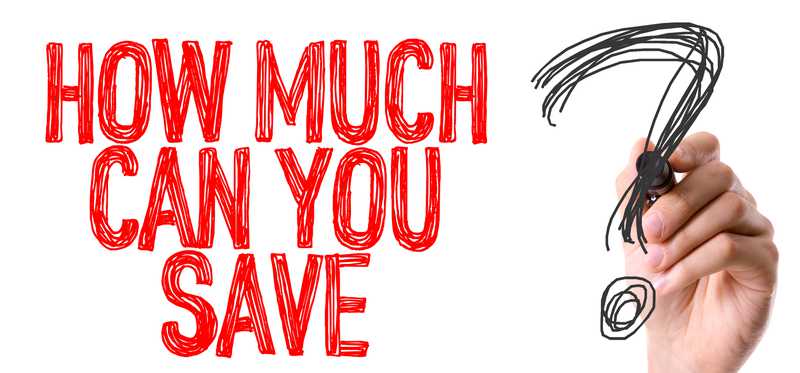
50 Everyday Costs You're Overlooking That Are Adding Up
Small sums add up
Lots of small things add up to a substantial sum over time -- like those soy sauce and duck sauce packets you receive every time you get Chinese take-out food. That's not a very consequential example, though -- at some point you can just toss them out and you won't have suffered much. But many other examples are consequential, as they regularly cost you a little money -- and over time, can end up costing you a lot.
Here are 50 examples of everyday costs you may be overlooking. If a dozen or more apply to you (and they probably do), then you're probably ending each year with several hundred dollars -- or several thousand dollars -- less than necessary.
Previous
Next

1. Magazine and newspaper subscriptions
Like clockwork, every few weeks, certain magazines arrive at your doorstep -- and perhaps the local newspaper every day as well. If you're reading them all, great. But there's a good chance that some of them tend to go unread much or most of the time. If so, then that means you're wasting money paying for them. Just four $25 subscriptions total $100 per year, and over five years, that's a significant $500. Many periodicals cost $100 or more per year apiece, too.
You might compromise by switching from a paper subscription to a purely digital one, if possible, as those generally cost less. Be particularly vigilant if any of your subscriptions are set to renew automatically. You'll often get a notice before being charged, and that's a good time to cancel.
Previous
Next

2. Gifts
Yup, gifts are a common expense that can quietly add up over time. There's nothing wrong with buying and giving gifts, but take a little time to figure out just how much you're spending on them. If you have five loved ones you usually give presents to costing around $50 and another five who get gifts costing $100 or more, between birthdays and the holiday season, you've very likely spending $1,500 on gifts. Many people spend much more than those sums on gifts, too, and have larger families or circles of close friends.
Consider reining in your spending on gifts. You might make some gifts instead of buying them -- perhaps knitting sweaters, making candles, taking and framing photographs, and so on.
Previous
Next

3. Gym memberships
This is a classic wasted expense for many people. Lots of folks join gyms with the best of intentions, but over time simply stop going. They often don't stop paying, though -- because their membership payments are automatically charged to them. If this is you, you may be paying, say $40 per month -- for no particular reason. That's $480 per year, and a whopping $2,400 over just five years. Stick with the gym if you actually use it, but cancel it if you don't.
Remember that you can get good workouts in lots of other ways (running, walking, calisthenics, a home gym, etc.) -- and you may even have a gym available to you at your workplace.
Previous
Next

4. Discount store memberships
It now costs at least $60 to join Costco (Nasdaq: COST), $55 to join BJ's, and $45 or more to join Sam's Club. Those costs can be well worth it if you shop at those stores regularly and buy a lot of items there -- perhaps because you're supporting a large household. If you live alone or with just one other person, though, or if you don't hit the discount warehouses very often, you may not be getting enough benefit from your shopping to make up for the membership fee(s).
This even applies to Amazon.com's (Nasdaq: AMZN) Prime membership. If you've been a member for a while, you may not have noticed the price of membership creeping up over time. It's now $119 per year, and while that does get you all kinds of perks such as free delivery, access to gobs of Prime video offerings and millions of Prime music songs, and special discounts at Whole Foods Market, if you don't make sufficient use of those perks, the membership may not be worth it for you.
Previous
Next
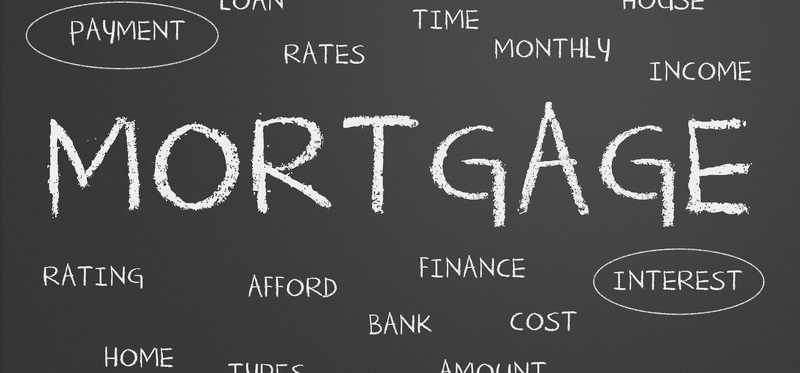
5. Mortgage interest
How might you be wasting money on your mortgage interest? Well, one way is if you've got a 30-year loan when you could handle the steeper monthly payments on a 15-year one. Shorter-term mortgages will cost you far less in mortgage interest over time. As an example, if you borrow $200,000 at 3.4% for 15 years or at 4.1% for 30 years, you'd pay about two and a half times more in interest over the life of the loan with the longer one -- $118,323 vs. $44,475. If you're planning to stay in your home a while, you might look into whether refinancing is worth it for you.
A less costly way to rein in those interest expenses is to make occasional (or regular) prepayments on your mortgage, reducing your principal owed more rapidly and reducing your total interest paid -- and the life of the loan as well!
Previous
Next

6. Clothing
Clothing is certainly extremely necessary for just about all of us -- but spending as much as we often do on it is not necessary. The average household spending on clothing and related services (such as tailoring and dry cleaning) is $1,833 annually, according to the Bureau of Labor Statistics' 2017 Consumer Expenditure Survey. That amounts to about $150 per month.
A quick glance into your closet might make it clear that you have many more items of clothing than you need. Consider donating a chunk of them -- and getting a tax deduction for your trouble. Having too many clothes also suggests that you routinely acquire more than you need. Aim to buy less, and to buy when needed items are on sale. Be particularly careful not to overbuy for your children as they will be quickly outgrowing much of their apparel.
Previous
Next
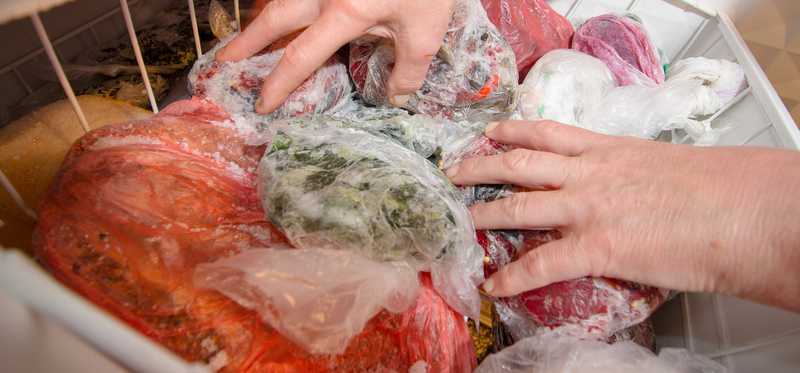
7. Food that gets thrown away
Get this -- a typical American tosses out more than 400 pounds of food each year, per the Natural Resources Defense Council. Even if that food cost you just $0.50 per pound, it would total more than $200, but much of that food costs more than that. Our freezers are often full of foods we stashed in them years ago -- foods that, when we remove them, sometimes look or smell funny and end up getting trashed. This can include steaks that cost $10 per pound or shrimp that cost $15 per pound. Meanwhile, we may be over-ordering at restaurants, bringing home leftovers, and then tossing them out after a few days of not eating them.
Previous
Next

8. Coffee and tea
Coffee and tea don't have to cost you a lot. You can buy a box of 100 tea bags for a few dollars at your local supermarket -- or you can order a fancy container of 20 to 50 tea bags for $10 to $20. Meanwhile, a bag of ground coffee at the supermarket can cost $5 or less -- with fancier names costing perhaps around $10 per pound. Even those higher prices aren't so bad -- when you compare them to the cost of coffees and teas you might buy at various coffee- and teahouses, where a single beverage can cost as much as $5 or so. Spending $5 every weekday on such a splurge may seem not that consequential, but it amounts to a whopping $1,250 per year!
Previous
Next

9. Pet care
Fido and Fluffy deserve to be well cared for, but you may be overdoing it. If you're not buying pet food on sale and are buying costlier-than-average brands, those expenses may be adding up to a lot. It's the same if you're spending $50 to $75 to have your dog groomed every few weeks. If you're spending $65 on professional dog grooming every month, that's $780 per year. See whether you can reduce the frequency of grooming services, to save money -- or whether you can do some of it yourself.
Pet owners can get carried away with toys, too. It's good to give your pets things to play with, but many of them can get as much entertainment from an empty box, an old tennis ball, or a knotted rope than from electronic gadgets and other costly toys.
Previous
Next

10. Home maintenance
Home maintenance costs can add up. For example, if you employ someone to clean your home once a week, and that costs you $75, you're forking over almost $4,000 annually. Have your cleaner come every other week, and you can save almost $2,000. There are other costs that add up, too, such as having your chimney and gutters cleaned and perhaps even having a piano tuned. Some of these kinds of tasks are ones you might do yourself -- such as gutter cleaning -- to save significant dollars, but others will require a pro.
Previous
Next

11. School fees and supplies
If you're thinking "Gee, I sure seem to spend a lot on my kids' school supplies and fees," you're not imagining it. The Huntington Backpack Index estimates annual costs for school supplies, such as pens, pads, calculators, flash drives, gym uniforms, field trips, parking passes, and more -- including backpacks, of course. For the 2018-2019 school year, the index totaled $637 for elementary school children, $941 for middle school children, and $1,355 for high school students. Your own kid might cost even more, depending on where you live and the child's activities. You can't avoid many of these costs, but with a little effort, you may be able to keep expenses in check a bit.
If there are items you buy frequently, such as last-minute poster board purchases for various projects, consider buying a lot of poster board early in the year, when you run across a sale or good price. When it's back-to-school season, focus on finding bargains and sales for the items you need. A good notebook can cost you $1.50 or $4.50, so aim for the lower prices. See if any older kids you know no longer need some of the supplies they still have that you now need.
Previous
Next

12. Going to the movies
Going out to the movies is a fun treat, but it's probably costing you more than you think if you do it regularly. The average cost of a movie ticket was recently around $9.11 -- meaning that about half of tickets sold cost even more than that. Meanwhile, a big bucket of popcorn can easily cost $8, while a soda or a box of candy can cost $4. A family of four going to the movies can easily spend $75 or more for one night's entertainment. If they go to the movies every other weekend, that's almost $2,000!
It's worth remembering that many fairly new movies are available to watch on your large-screen TV at home via various streaming services, and they may cost you just $5 or less to do so.
Previous
Next

13. Food deliveries
You come home tired and you haven't planned what dinner will be. A quick and easy solution is just calling a favorite local eatery and ordering food to be delivered. If you do that twice a week and it costs you, say, $30 each time, you're looking at an annual expense of… $3,120!
It's definitely a welcome treat to have dinner delivered, but if you want to keep more dollars in your pocket, aim to do so less often. With a little planning, you can avoid many last-minute orders. For example, keep a few inexpensive frozen pizzas and/or bags of ravioli in the freezer for last-minute meals. Or for healthier fare, plan much of each week's meals ahead of time, shopping for the ingredients ahead of time, too. You might also prepare extra-large batches of dinners, so that you can freeze half for later use.
Previous
Next

14. Smoking
The average cost of a pack of cigarettes nationally was recently $5.51, but in most states, the cost was between $6 and $8 per pack. If you smoke a pack a day, then, it can easily be costing you between $2,190 and $2,920 per year. And if you're in Illinois or New York, where packs average more than $11 or $12 apiece, you're looking at annual smoking costs of between $4,000 and $4,600! Smoke two packs a day? Then double those numbers.
Quitting smoking can seriously turbocharge your efforts at saving for retirement or a down payment on a home or college for your kids. Better still, your health will improve markedly. Only a year after quitting, your risk of coronary heart disease, heart attack, and stroke will drop to less than half of that of a smoker, and after five to 15 years, your risk of having a stroke will have fallen to that of a non-smoker.
Previous
Next
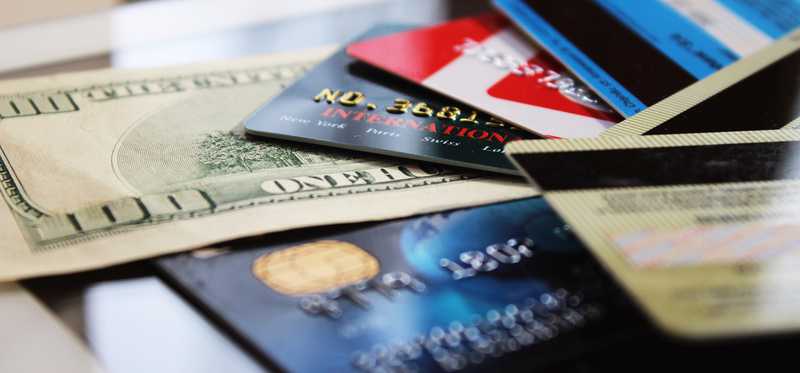
15. Annual fees on credit cards
You may look at the $450 annual fees for some fancy credit cards and shake your head, but even a $75 or $95 annual fee can make a dent in your finances. Pay $95 each year for just five years, and you've forked over a hefty $475. These aren't unavoidable fees, either. There are loads of terrific no-annual-fee credit cards, and even if you have a card you like with an annual fee, you may be able to get it waived simply by calling the credit card issuer and asking. Many people have done just that -- successfully.
That said, some annual fees are worth paying -- if you're getting back more than the fee in rewards or cash back or some other benefit.
Previous
Next

16. Airline fees
In 2017, the 10 airlines that charged the most fees took in almost $30 billion from them. If you flew, odds are that you forked over various fees to your airlines, some of which you didn't have to. Many airlines charge fees for checking bags, so if you can restrict your packing to fit in a carry-on bag, you can save $25 or more per flight. (If a flight is full, you'll often be given a chance to check your bag for free at the gate, too.)
Meanwhile, if you're paying an extra fee (typically $10 to $40) to board earlier than other passengers and you have an assigned seat, that head start may not be worth it. Many airlines charge fees if you book your ticket over the phone with them or do so in person. Those fees range from about $15 to $35, and can be avoided by booking online. (Check first, though, as some airlines don't charge for in-person or over-the-phone bookings.)
Previous
Next

17. Cell phone plans
Many dollars are lost by many people who simply don't update the various plans and subscriptions they have. For example, you may have signed up for a costly family cell phone plan because your kids use a lot of data. If your kids are off on their own now, perhaps with their own phone plans, you may save money by switching to a less costly plan. Even if your household still consumes a lot of data, you may find a cheaper plan featuring unlimited data by shopping around.
Previous
Next

18. Credit card interest
Carrying revolving debt on your credit cards and paying the steep interest rates that cards typically charge is a great way to lose big bucks annually. Imagine, for example, that you owe a not-unusual sum of $20,000 and you're being charged a not-unusual rate of 22%. That's a whopping $4,400 per year in interest alone! It will be hard to pay the debt down when you're paying thousands just to maintain the debt.
Aim to pay off all credit card debt as soon as you can, using balance transfer cards if need be. You might start by calling your card issuer(s) and asking for lower interest rates. Many customers who have done so have been successful.
Previous
Next

19. Babysitting
Do you like to go out frequently, leaving your kids in the care of a babysitter? It is important for parents to get a break from parenting, but if you're getting a lot of breaks and paying babysitters for them, those costs can really add up. The recent average hourly rate paid to babysitters was $16.75 for minding one child and $19.26 for two kids. If you have two kids and pay a sitter for three hours once a week, that comes to $3,000 -- and that's using the national average rate. If rates are above average where you live, you'll be forking over even more.
Consider stepping out a little less often -- or look for other ways to trim those costs. For example, you might trade child-minding services with friends who have kids. Once a week you'll watch their kids and once a week they'll watch yours.
Previous
Next

20. Banking fees
Banks keep your money and pay you interest for that privilege. They don't pay you much interest, though, and at the same time, they're charging a lot in fees. Many banks charge fees for not having a minimum amount in your account, for not having a transaction in a certain period, for getting paper statements mailed to you, for foreign transactions, for using out-of-network ATMs, for "monthly maintenance," and sometimes even for having a teller help you at a branch. Monthly maintenance fees alone are typically around $13, which tops $150 annually. Fees for using an out-of-network ATM recently averaged more than $4.
Aim to keep these costs as low as possible. You might start by taking a close look at fees charged by local banks and credit unions and opening an account at one with generally low fees and no maintenance fees charged. You can also opt for paperless statements and make sure to only use in-network ATMs. You may be able to have some fees waived by asking -- or perhaps by maintaining a minimum balance in the account and/or by having some funds regularly direct-deposited into the account.
ALSO READ: You May Be Paying More in Bank Fees Than You Realize
Previous
Next

21. Lawn care
Maintaining your home can cost a lot more than you think it's costing you. For example, are you spending $50 per week on lawn care services? Five months of that can cost you $1,000. Does your snow plow service charge $50 as well? That can take $300 or more out of your budget every winter. On top of that, you might be forking over $500 once or twice a year for a spring clean up or fall leaf removal. Got a pool? If you're spending $100 per week having it maintained, that's $1,200 to $1,600 over a summer. See whether you can tackle some of these tasks yourself. Mowing your lawn regularly can be a great exercise opportunity, too.
Previous
Next

22. Haircuts
It's hard to avoid having to go to the hairdresser, but you may be able to have the expense cost you less. Nationwide, men pay around $15 to $25 for a haircut -- not including extras such as shaves, beard trimming, coloring, and so on. A monthly cut for $20 will set you back $240 per year -- plus tips -- and more, if you need any extras. A little shopping around and trying different cutters can lead you to a cutter you like who charges less and saves you money.
Not surprisingly, women pay more than men, and as with men, it varies by location. A recent average price for a woman's cut in New York City was $73.33, while it was $54.00 in Chicago and $26.33 in Miami. Again, some shopping around can save you a lot. Find a stylist you like at SuperCuts or GreatClips, for example, and you can pay less than $20 per cut.
Previous
Next

23. Impulse buys
A lot of people lose significant dollars to impulse buys. These may happen because they engaged in "shoppertainment" -- hitting stores with friends for fun or by themselves just because they're bored. Many people shop "just to cheer themselves up," and a 2017 survey by the folks at swap.com found that on average, Americans spend $1,652 on such "retail therapy."
When you're shopping, ask yourself if you're doing so because you actually need some item(s) or if you're simply buying things on impulse. Reining in that kind of spending can help you keep many dollars in your pocket -- or retirement accounts.
Previous
Next
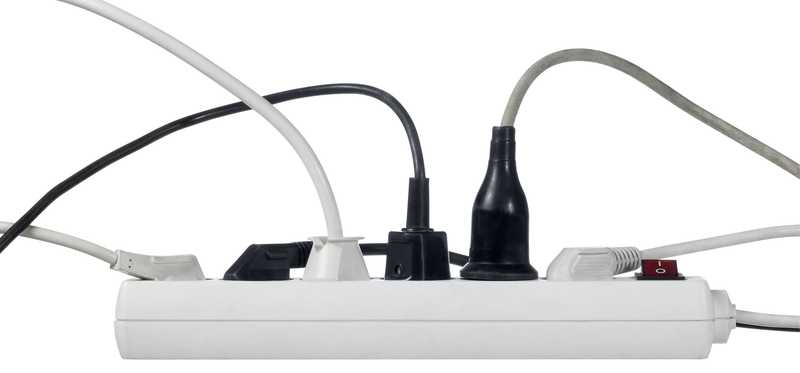
24. Electricity
You probably know that you're wasting electricity (and, thus, money) when you leave the lights on in a room you've exited. But that's only one of many ways that we lose money due to wasted electricity. If you habitually fall asleep with the TV on, you're doing so -- and you can prevent it from happening by using your TV's sleep function, if it has one. Even worse is leaving the air conditioning set to cold or the heater set to very warm -- and forgetting them on when you leave the house.
This further example might surprise you: Electronic appliances and devices that you leave plugged in but are not using are very likely still drawing power -- that you're paying for. This is clearly the case when they have a light that stays on, such as a coffee maker's clock display. Televisions, cable boxes, computers, printers, and many other items are also sucking up electricity when you're not using them. One solution is to plug various items into a power strip that will let you turn them all on or off at once.
Previous
Next

25. Water
You can lose money with water, too. For example, leaky faucets or toilets that keep running after you flush them are consuming more water than you need -- and you're paying for each drop. Even working toilets and faucets can be problematic, using more water than necessary. You might address that by using low-flow toilets, shower heads, and faucets.
Don't forget your hot water heater, either. There's a good chance that your heater is set to keep your hot water at a hotter-than-necessary level. Try turning the heat level down a smidge and see if you still have sufficiently hot showers and baths. If you do, try turning it down a little more. Keeping it hotter than necessary means you're paying more in energy bills than you need to.
Previous
Next

26. Vitamins and supplements
You might think that you're taking good care of yourself by swallowing lots of vitamins and supplements regularly -- but in many cases, you're not. As noted in a Johns Hopkins blog post, "…multivitamins don’t reduce the risk for heart disease, cancer, cognitive decline (such as memory loss and slowed-down thinking) or an early death" and "…vitamin E and beta-carotene supplements appear to be harmful, especially at high doses." Some people do need to take certain vitamins or supplements, but most of us can get what we need simply by eating nutritious foods.
Taking vitamins and supplements regularly can also cost us some significant dollars. If you buy a $15 bottle of vitamins or supplements every month, on average, that's $180 per year -- and $900 over five years.
Previous
Next

27. Financial advisor fees
It's a good idea for many people to consult a financial advisor once or more in their lives, to review their fiscal condition and get on a sound track to financial security. But another kind of financial advice and money management is much more problematic -- that's when you fork over a percentage of your assets every year in exchange for having a financial pro oversee your account. If you've accumulated an account worth $400,000 and you're paying 1% or 1.5% annually, that's $4,000 or $6,000 out the door, whether the advisor has helped your account or not. Paying around $4,000 annually amounts to a whopping $40,000 over a decade and $100,000 over 25 years.
Learn more about financial advisors and consider tapping the services of a "fee-only" one, who will charge you only for what they do for you and will not be collecting commissions for selling you certain products (whether you really need them or not).
Previous
Next

28. Professional dues and memberships
Once you graduate from college and enter a profession, there's a good chance that you're not done learning and racking up more letters to follow your name. It's common in a variety of professions, such as the financial, technological, and medical fields, to earn various certifications and designations. But once you do so, you typically have to keep up with them, earning continuing education credits. It's also common to join various professional organizations -- and to have to pay annual membership fees to them.
These kinds of costs can be several hundred dollars each, and they really add up over time. You will probably want or need to keep some active throughout your career, but if you've shifted your focus over the years, some may no longer really be useful to you, and letting them lapse can let you keep more dollars in your pocket.
Previous
Next

29. Speeding and parking tickets
Do you tend to get several speeding, driving, and/or parking tickets every year? If you do, those charges can add up over time, amounting to a significant sum. The average speeding ticket in America was recently around $150, but some states charge more than $2,000 in certain cases. Merely getting two speeding tickets a year can cost you $300 -- to $1,000 or more -- annually. Speeding will cost you more in fuel usage, too, and even worse, it can cause your car insurance premiums to soar. Respecting speeding limits and other traffic rules can keep your costs down -- and it's safer, too.
Previous
Next

30. Lottery tickets
If you like to buy lottery tickets, you're not alone -- roughly half of Americans do so, and the total spent on them is huge: about $73 billion in 2016, per U.S. Census data. Among those who play the lottery, it's estimated that per capita spending is around $600. That might be what you spend on lottery tickets each year, if you buy five or six $2 tickets each week.
Sure, winning the lottery will make that $600 per year (and $6,000 over a decade) worthwhile, but you really, really, really are unlikely to ever win a big jackpot. The odds of winning the Powerball jackpot, for example, are 1 in 292,201,338.
ALSO READ: Here's What Millennials Would Do If They Won the Lottery
Previous
Next

31. Credit card late fees
If you pay your credit card bill late now and then, you may think nothing of the fee that's imposed. It may be as high as $28. But the next time you pay that bill late, the fee can be as high as $39. Three infractions like that can top $100 in a single year -- and you're not getting anything for that money, either. Worse, late payments on credit card bills (and various other bills, such as your mortgage payment) can end up on your credit record and can depress your credit score. That's bad news, as a low credit score means you won't be offered the best interest rates when you want to get a car loan, refinance your mortgage, or engage in various other transactions.
Previous
Next

32. Landline phones
If you and the other members of your household have smartphones, and they're almost always with you, then you may be wasting money each month on that landline phone you still have. A basic landline phone costs around $15 to $30 per month, which is $180 to $360 per year. A plan with more features, such as long-distance calls and caller ID, might cost between $50 and $75 per month. That's $600 to $900 annually -- when you probably make and receive most of your calls on your smartphone. Think about how important that landline really is to you.
Previous
Next

33. Medicines
Among the many seemingly minor expenses we incur regularly are medicines. Examples would include a $10 bottle of Ibuprofen, a $5 container of Benadryl, $20 spent on Prilosec, and an $8 bottle of Nyquil. Those four items alone cost $43. It's often unavoidable buying these items when we need them, but there are ways to keep your medicine spending in check. For starters, do some digging online to find the lowest prices for the medications you need. Surprisingly, in some cases, prescription drugs can be cheaper than their over-the-counter counterparts. Flonase, for example, used to treat allergies, can cost $20 or more on a drugstore shelf, but if your doctor prescribes it, your insurance plan might bring the cost down to $10 or $15. For many prescription drugs these days, there are generic alternatives that cost far less, too. Prices can even vary widely from drugstore to drugstore for over-the-counter items -- and warehouse discounters sometimes offer the lowest prices.
Previous
Next

34. Batteries
Do you find yourself buying batteries frequently? After all, many items in our homes these days require them -- remote controls, game devices, cordless phones, clocks, and flashlights. Instead of spending, say, $4 on a four-pack of AA batteries, you can probably buy a lot more for a lot less -- such as a 48-pack for $30 or less. Better still, look into getting and using rechargeable batteries. It will cost more upfront to buy the charger and the batteries, but over the long run, you'll save money -- while taking less of a toll on the environment.
Previous
Next

35. Collections
You may not call yourself a collector, but look around your home. Do you own dozens or hundreds of board games, jigsaw puzzles, wines, dolls, sweaters, vinyl records, books, DVDs, or comic books? If you do, you're a collector! And collections cost money -- frequently much more than you realize. Take a few minutes to crunch some numbers in your head. For example, did your board games cost you an average of, say, $25 each? Well, if you have 200 of them, that means you spent $5,000 on those games! If you have 400 bottles of wine in your basement that cost you an average of $35 apiece, that's a total value of $14,000! These kinds of seemingly little expenses really add up over time.
Consider reclaiming some of that value by selling half of a collection -- and by being pickier and more infrequent with your future additions to your collection.
Previous
Next

36. Dining out
Most of us enjoy dining out now and then. And it may not seem like it costs that much to do so, either. A meal for two people at a nice restaurant can cost, say, $50 to $100. A meal for four at a less costly establishment might cost $75 to $100. If you're spending $75 once a week on a restaurant meal, though, that comes to a total of $3,900! Spending $100 once a week (or $50 twice a week) amounts to even more -- $5,200 annually. Consider dining out half as often, and you may be able to keep a few thousand dollars in your pocket -- especially if you prepare inexpensive meals at home instead of those restaurant meals.
Previous
Next
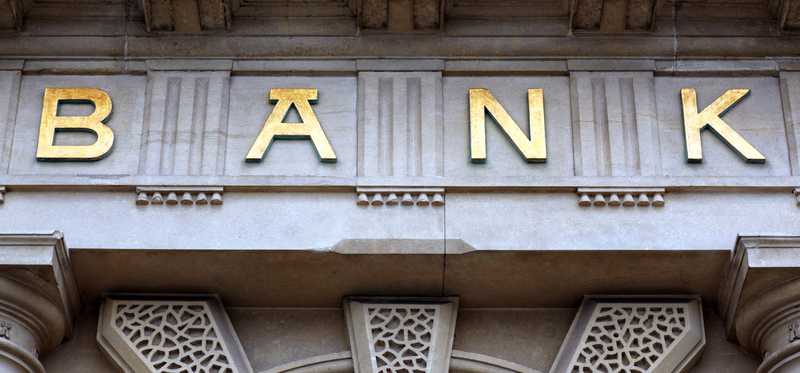
37. Overdraft charges
Banks raked in more than $34 billion in 2017 -- from a single kind of fee. It's the "overdraft" charge, levied when you try to take out more money from your account than is there -- such as by withdrawing funds from an ATM or using a debit card to pay for something. This can easily happen without your realizing it, and it can happen multiple times in a day -- with your being charged the fee multiple times. Bank of America (NYSE: BAC), Citigroup (NYSE: C), and Wells Fargo (NYSE: WFC) were recently charging around $35 to $38 per overdraft incident, up to a limit of three to four charges per day, totaling between $105 and $140 per day.
You can avoid these fees by keeping a healthy balance in your account and by opting out of your bank's overdraft coverage plan -- which lets you temporarily have a balance below zero but charges you overdraft fees. Without the plan, any attempt to withdraw more money than is in the account will simply be rejected, without a fee.
Previous
Next

38. Bottled water
Buying bottled water is a particularly easy way to have a lot of little charges adding up to a meaningful sum. This can happen even if you buy inexpensive bottled water, such as paying a supermarket $4 for a pack of 24 bottles. That might last a family just a week, and if so, you're looking at a total of around $200 spent over a year -- for something that you can get almost for free out of your tap. Worse still, many people buy fancy bottles of water when they're out and about, and a single bottle can go for as much as $4 or more that way. Buying a $4 bottle of water just twice a week amounts to more than $400.
Bottled water is frequently not even as good for you as tap water -- though it might taste better. Consumer Reports magazine tested 130 brands of bottled water and found traces of arsenic in 11 of them -- six with worrisome levels of it. Some bottled water companies have been accused of simply using ordinary ground water instead of drawing their elixirs from fresh mountain springs. You may be better off simply using a water filter at home and refilling a reusable water bottle to carry around.
Previous
Next

39. Rental car insurance
Do you travel frequently, often renting a car when you do so? If so, and if you routinely buy that rental car insurance you're offered, you may be paying more than you need to. That's because if you have a car at home and it's covered by insurance, there's a good chance your policy protects you even if you're driving a rental car instead of your own. Many credit cards offer some kind of coverage, as well, when you book a rental car with your card. Call your card issuer or your insurer to check -- and then perhaps skip the add-on insurance, which can cost between about $10 and $30 per day. Six trips a year, with a three-day rental apiece, would be 18 days of coverage: At, say, $20 per day, that's $360 per year.
Previous
Next

40. Other unnecessary insurance
Speaking of insurance, there are many other kinds of unnecessary insurance that we pay for. For example, you may have richly insured your car when it was new, but if it's 10 years old now and not in the best shape, you may not want to be paying for collision coverage at this point. If it's seriously damaged, you might prefer to get a new car than to fix it. Travel insurance can also be not worth buying, and the life insurance you're carrying may also have outlived its usefulness if your kids are grown and no one is depending on you financially any more.
Give a thought to your deductibles, too, for your car insurance, home insurance, and even health insurance. A low deductible means a higher premium, and in many cases, it's worth it to have a high deductible and pay lower premiums. Crunch the numbers for yourself, seeing how likely you think you'll be to have various claims -- and be sure that whatever deductible you opt for, you can pay it if need be. High deductibles can save you money, but they shouldn't imperil you financially.
ALSO READ: Avoid These 5 Mistakes When Shopping for Health Insurance
Previous
Next

41. Convenience foods
Frequently buying convenience foods can cost you a lot over time. For example, a small box of rice pilaf mix can cost you $2 or more at the supermarket and will last for just one meal. But the same sum can get you several pounds of rice that can support lots of meals. Increasingly popular "freshly made" prepared meals that you can get at the supermarket can also cost a lot more than if you made the meal yourself: Consumer Reports recently reported that many such meals cost $7 or $8 per pound, vs. roughly $3 to $4 per pound if you made the meal yourself. Sometimes convenience foods are… convenient. But aim to make them an occasional, not regular, convenience, if you want to save money.
Previous
Next

42. Concerts and sporting events
Ticket prices to see live music, shows, and sporting events, have grown very steep in the last decade or two. These days, many shows sell out quickly -- even with seats costing close to $100 or more apiece, leaving people to hunt for tickets in the secondary market, where they can easily cost several hundred dollars per ticket. If you and a friend or partner catch one show per month and pay only $100 per ticket, you're looking at a $1,200 annual cost -- per person.
Previous
Next

43. Alcohol
American households spend an average of $558 annually on alcoholic drinks, per the Bureau of Labor Statistics' 2017 Consumer Expenditure Survey. That amounts to about $46 per month. But remember that many people don't drink at all, or drink very rarely. That means that the cost for those who do drink regularly is likely significantly higher -- very likely $1,000 or more annually, for many people. Think about your own drinking habits and whether you want to cut back any, to save money or perhaps to improve your health. With many mixed drinks costing $10 or more at restaurants and bars, if you quaff two of those a week, that's more than $1,000 per year right there.
Previous
Next

44. Personal care and grooming
Personal care products are another area where relatively small expenses can really add up. No one is suggesting you go without shampoo or soap, but take a close look at just what you're buying. Are you spending $10 or $20 a week on luxury products such as fancy lotions and fragrances? That's about $500 to $1,000 per year. Are you spending $50 to $100 per month on massages, manicures, pedicures, or facials? That's $600 to $1,200. Go ahead and treat yourself now and then, but do ask yourself whether you're treating yourself more than you really should, given your various financial goals.
Previous
Next

45. Name-brand groceries
Food companies spend a lot of money on marketing and advertisements that are designed to make us think their branded products are much better than store-branded or generic items. In many cases, though, the store-branded items are as good or better -- and they can cost you a lot less. If you routinely pay, say, a 20% price premium for name-brand items and you spend $250 per week at the supermarket, you're forking over an extra $42 dollars weekly, which adds up to more than $500 per year. Folks at cheatsheet.com compared name-brand vs. store-brand items in many categories and found a lot of store-brand winners, such as Great Value vanilla bean ice cream, Giant Eagle chicken broth, Kroger cocoa puffed cereal, 365 organic vegetable soup, Wegman's no-pulp orange juice, and Market Pantry ketchup.
ALSO READ: Why Cities Are Becoming a Retail and Grocery Battleground
Previous
Next

46. Brokerage commission costs
A decade or two ago, this section would have pointed out that instead of paying $50 or even $100 or more to your full-service brokerage per stock trade, you could pay far less to a discount brokerage, as many were charging less than $25 per trade. Well, times have changed, and those discount brokerages are now major brokerages with far lower trading commissions -- often $7 or $5 or even less -- and the older brokerages are now charging far less per trade as well. Still, depending on the brokerage you use, you might be paying $20 or so per trade when you could be paying $5. That's not such a big deal if you trade infrequently -- and infrequent trading is, in general, better than frequent trading. But if you're placing, say, 20 trades per month and are paying $15 more than you need to with each one, you're forking over $300 per month or $3,600 per year more than you should.
Previous
Next

47. Cable bills
The average cable bill, as of last year, was $107 per month, per the Leichtman Research Group. That's almost $1,300 per year! That's just the average, though, and many people pay a lot more -- in part due to creeping prices. You may sign up for a seemingly good deal -- perhaps just $80 or $100 per month -- only to notice, some months later, that you're suddenly paying $130 or $150 per month, due to some promotions having expired. If you're sticking with cable, you should call your cable company regularly to see what promotions are available and to ask how to reduce your monthly bill. That's a pain, though -- so consider cutting the cable cord and streaming your video entertainment instead via one or more streaming services.
Previous
Next

48. Streaming services you don't use
If you've cut the cable cord and are now just streaming your video entertainment, be careful to not end up in a similar situation as with cable -- spending too much. Many people are signing up for more streaming services than they really use, and thereby paying more than they should. For example, a Netflix (Nasdaq: NFLX) subscription recently cost $9 to $16 per month, while an Amazon.com Prime membership cost $119, equivalent to about $10 per month. On top of that, you might be paying for Hulu, which recently dropped its monthly fee for its ad-based service to $6 per month, while hiking its Hulu with Live TV service price to $45 per month. Meanwhile, there's CBS All Access for $6 to $10 per month, Starz for $9 per month, Showtime for $11 per month, HBO Now for $15 peer month, and Sling TV, for $25 or $40 per month. Take a few minutes to think about which services you're paying for, how much they're costing you, which ones you're really watching a lot, and whether you should cancel any.
Previous
Next

49. Gas
Another relatively modest expense that adds up over time? The gas that you put in your car. If you spend, say, $30 per week filling your tank, that's a hefty $1,560 per year. It's easier said than done to cut back on your fuel consumption, but there are some ways to do it. For starters, you might car pool to work with some colleagues -- perhaps just once or twice a week. You can also improve your vehicle's fuel efficiency by not speeding and not carrying excess weight around (like those heavy golf clubs in your trunk -- or the big bags of soil you bought last week but haven't removed yet). You might also switch to a more fuel-efficient vehicle. Imagine, for example, that your old vehicle gets 20 miles per gallon and your new one gets 30. If you drive 12,000 miles per year and pay $2.59 per gallon, you'll spend $1,554 on gas over the year for the older vehicle and $1,036 for the new one. The new one will save you more than $500 per year!
ALSO READ: 3 Reasons Hydrogen Fuels Won't Live Up to the Hype
Previous
Next

50. Stamps
Finally, we come to good, old-fashioned stamps. Now that we typically buy "Forever" stamps, we often don't even realize what the going rate for a first-class stamp is. As of 2019, it's $0.55 per stamp. It's a small sum, still, but it can add up. If you send out, say, 15 stamped envelopes per month, that's $8.25 per month and $99 per year. You can reduce that considerably by paying bills online, via your bank's website or mobile app. Doing so is typically free. If you can avoid stamping 10 bill payments per month, you can save $5.50 per month and $66 per year.
John Mackey, CEO of Whole Foods Market, an Amazon subsidiary, is a member of The Motley Fool’s board of directors. Selena Maranjian owns shares of Amazon, Costco Wholesale, and Netflix. The Motley Fool owns shares of and recommends Amazon and Netflix. The Motley Fool recommends Costco Wholesale. The Motley Fool has a disclosure policy.
Previous
Next
Invest Smarter with The Motley Fool
Join Over Half a Million Premium Members Receiving…
- New Stock Picks Each Month
- Detailed Analysis of Companies
- Model Portfolios
- Live Streaming During Market Hours
- And Much More
READ MORE
HOW THE MOTLEY FOOL CAN HELP YOU
-
Premium Investing Guidance
Market beating stocks from our award-winning service
-
The Daily Upside Newsletter
Investment news and high-quality insights delivered straight to your inbox
-
Get Started Investing
You can do it. Successful investing in just a few steps
-
Win at Retirement
Secrets and strategies for the post-work life you want.
-
Find a Broker
Find the right brokerage account for you.
-
Listen to our Podcasts
Hear our experts take on stocks, the market, and how to invest.
Premium Investing Services
Invest better with The Motley Fool. Get stock recommendations, portfolio guidance, and more from The Motley Fool's premium services.